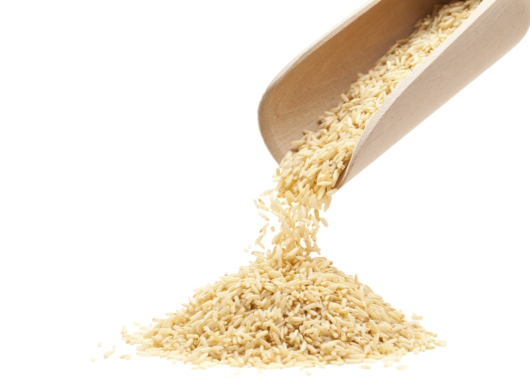
Some of us work better under pressure, while others like a longer, more drawn out process to stay in control. The same goes for materials as they pass through a conveying system.
Each material requires its own level of pressure, aeration and pocket size to ensure that your system is reaching its optimal material flow.
Here are three things to consider when selecting a rotary valve for your pneumatic conveying system to improve your material flow.
1. Blow-by air, or leakage
An airlock keeps pressure consistent as materials move through your system. Despite this, it’s normal for leakage to happen in your rotary airlock valve. With our valves, there is a 0.004 inch rotor to housing clearance to prevent friction and a potential ignition source on the moving equipment.
Without airlocks, pressurized air in your system would be able to flow back upwards from the outlet port, up to the inlet port. This returning pressurized air blocks new materials from entering into the inlet port, and reduces your material flow.
That being said, even airlock valves need to be carefully maintained. Manufacturers will typically account for a small amount of blow-by when sizing your valves. But over time, the amount of blow-by can increase. If there is any material drag in the housing, or if material is being aerated too quickly, it has the potential to wear down your equipment.
The wear causes the housing clearance to widen, eventually allowing an increasing amount of blow-by back up into the inlet port. This, in turn, will continue to reduce your material flow.
You can mitigate some of the blow-by by choosing a valve with a blow-through adaptor at the outlet port, or, for stickier materials, an adapted blow-through valve. This ensures that aerated materials continue to flow in the correct direction in your system.
2. Product aeration
There’s a careful balancing act that needs to be done when considering how quickly or slowly your materials should flow, and how much aeration should occur. If you’re using too much air in your materials, you could be causing excess damage to your equipment from sandblasting materials through your entire system.
Conveying materials quickly requires more energy to power a pneumatic conveying system. If materials are moving too quickly in your machinery, this could not only mean inconsistent material flow, but also a lower ROI in your system as a whole. Alternatively, materials moving too slowly could cause blockages along your line. Blockages slow down materials, require extra clean-ups, and have the potential to cause dust explosions and fires in your plant.
You should also consider material density and moisture levels when sizing your rotary valves. We typically recommend sizing your valves at 70 per cent fill capacity to account for aerated materials.
A light, fine powder won’t have the same material density as cement ash or aggregates and other abrasive materials, and therefore each material should be considered individually when sizing your valve.
With properly sized valves, materials that have a wide-ranging density can be conveyed whether they are entering through the inlet at 60 PCF or at 90 PCF—without leading to reduced capacity for the rotary pockets.
Calculating your valve size using the material’s lowest or lightest bulk density will help your system achieve a consistent material throughput.
3. Shape
We don’t eat out of V-shaped bowls. This would make it difficult to get every last bite of our food, with the potential for crumbs to get stuck in the crack at the bottom of the “V.”
The same rules should apply to your rotary valves. ACS manufactures U-Shaped pockets so that material won’t get stuck in your rotors. They’re easy to clean and your machines will have less material build-up that could lead to blockages and reduce your material consistency.
It is possible to maximize your material flow, and keep it consistent throughout your line. ACS has a team of experts who can help you select the valve that works best for your materials, and fits best into your entire pneumatic conveying system.


